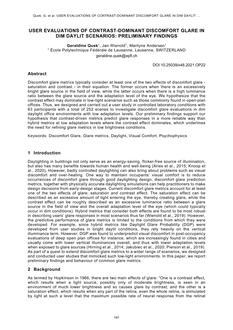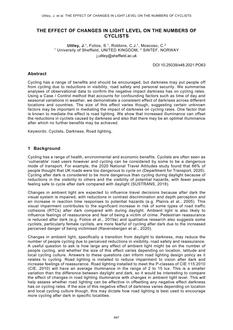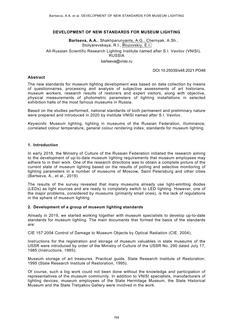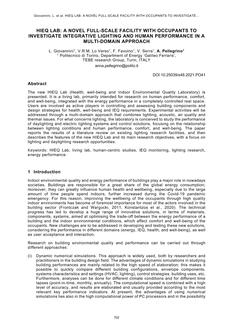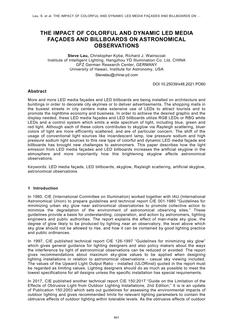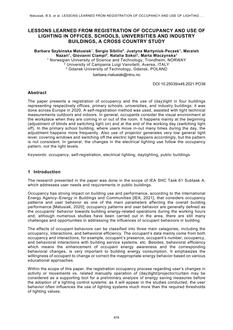Description
Discomfort glare metrics typically consider at least one of the two effects of discomfort glare – saturation and contrast – in their equation. The former occurs when there is an excessively bright glare source in the field of view, while the latter occurs when there is a high luminance ratio between the glare source and the adaptation level of the eye. We hypothesize that the contrast effect may dominate in low-light scenarios such as those commonly found in open-plan offices. Thus, we designed and carried out a user study in controlled laboratory conditions with 63 participants with a total of 252 scenes to investigate discomfort glare evaluations in dim daylight office environments with low adaptation levels. Our preliminary findings support our hypothesis that contrast-driven metrics predict glare responses in a more reliable way than hybrid metrics at low adaptation levels where the contrast effect dominates, which underlines the need for refining glare metrics in low brightness conditions.
Product Details
- Published:
- 09/29/2021
- Number of Pages:
- 12
- File Size:
- 1 file , 1.7 MB

